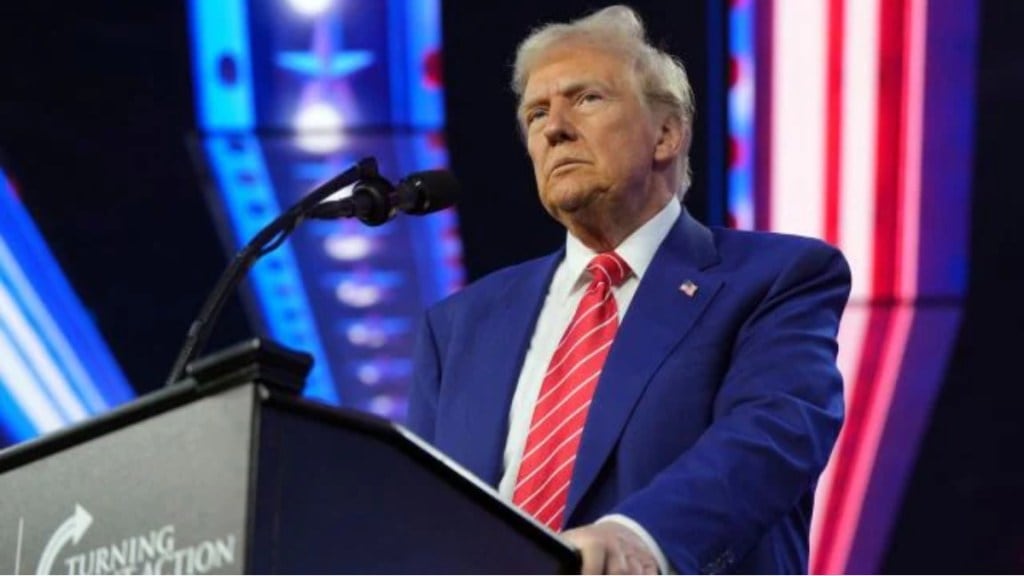The Panama Canal, a critical global shipping route, has recently become the center of a diplomatic row, with the US President- designate Donald Trump making bold claims that the United States should “take back control” of the canal. Trump’s comments, made during a rally at the Turning Point USA America Fest in Arizona, sparked backlash from Panama’s leadership and raised questions about the canal’s role in global trade, particularly for countries like India.
Trump’s Demand for US Control Over the Canal
Speaking to his supporters, he argued that the Panama Canal’s current management unfairly burdens US ships with excessive fees. He suggested that, if certain principles were not adhered to during his second term, the US might demand the return of the canal. “This is a major waterway, and America foolishly handed it over,” Trump said. His rhetoric echoed his “America First” policy, focusing on what he perceives as unfair economic practices against the US
His call to reclaim the canal has drawn sharp criticism, particularly from Panama’s President, José Raúl Mulino, who quickly rejected the notion, declaring that “every meter of the canal belongs to Panama.” Mulino further stated that the fees charged to ships passing through the canal were determined by experts and were entirely within Panama’s rights to set. His remarks reflect Panama’s deep pride in the sovereignty it regained over the canal after the US handed it back in 1999, ending nearly a century of American control.
The Panama Canal is considered a VITAL National Asset for the United States, due to its critical role to America’s Economy and National Security.
If the principles, both moral and legal, of this magnanimous gesture of giving are not followed, then we will demand that the Panama… pic.twitter.com/Xrtx8Bk2UW
— Trump War Room (@TrumpWarRoom) December 22, 2024
/
/
The Historical Context: The Canal’s Significance to Panama and the US
The Panama Canal has a long history, with the US playing a pivotal role in its construction and operation. After helping Panama gain independence from Colombia in 1903, the US took on the monumental task of building the canal, completing it in 1914. For nearly 85 years, the US controlled the canal, using it as a critical strategic and economic asset. However, following the 1977 Torrijos-Carter Treaties, the US agreed to transfer full control of the canal to Panama by 1999.
Despite this transfer of authority, the canal remains a symbol of historical US involvement in the region, which is likely why Trump’s recent comments have reignited debate about its ownership. His claim that the canal should be returned to US control raises questions about whether the US could reassert its influence over a region that has evolved significantly since the 20th century.
Why the Panama Canal Matters to Global Trade and India
The Panama Canal is not just a point of geopolitical contention; it is a crucial component of global trade. As the only waterway connecting the Atlantic and Pacific Oceans, the canal saves ships the daunting task of navigating around the southern tip of South America. This not only reduces travel time but also slashes shipping costs, making it an essential route for goods moving between the US and Asia, among other regions.
For countries like India, the Panama Canal is particularly significant. With increasing trade between India and the US, the canal has become a vital link for shipping goods across the Pacific. The canal allows for direct and cost-effective transportation of goods between the two regions, making it an important part of India’s trade infrastructure. If the canal were to face disruption or increased costs due to US involvement, Indian exporters would likely experience higher shipping costs and longer transit times.
Moreover, India’s growing economic relationship with both the US and Latin America could be negatively impacted if the canal’s management were to become a point of contention between the US and Panama. The potential for trade disruptions could affect Indian industries that rely on the efficient movement of goods between the Americas and Asia.
Trump’s Geopolitical Considerations and the China Factor
His comments about the Panama Canal also reflect broader concerns about China’s increasing presence in the region. Over the past decade, China has invested heavily in infrastructure projects across Latin America, including Panama, where Chinese companies have expanded their footprint, particularly in port facilities around the canal. This strategic investment has raised alarms in Washington, where some view China’s influence in the region as a challenge to US dominance.
In this context, Trump’s statements can be seen as part of a larger geopolitical strategy to counter Chinese influence in the Western Hemisphere. By suggesting that the US should reassert control over the canal, Trump is framing the issue as part of his administration’s broader competition with China for global influence, especially in critical infrastructure.
Panama’s Sovereignty and Future Prospects
Despite the tensions between Trump and Mulino, the fact remains that the Panama Canal is integral to Panama’s national identity and economy. As Mulino has emphasized, the canal is a sovereign asset that is deeply tied to Panama’s future. Any attempt by the US to challenge Panama’s control over the waterway could severely strain US-Panama relations and disrupt a long-standing partnership.
For now, Panama’s position remains clear: the canal is theirs, and they will not allow any external claims to undermine its sovereignty. The country’s strategic importance as a trade hub, particularly for global markets like India, ensures that any changes to its management would have far-reaching consequences.

